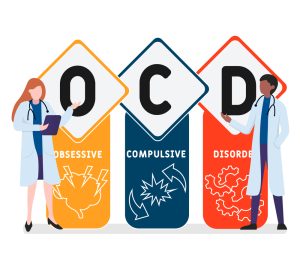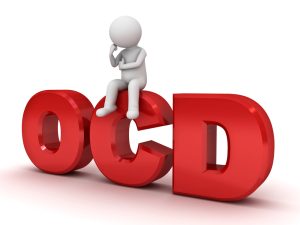I. Introduction

Obsessive-Compulsive Disorder (OCD) is a complex and often debilitating mental health condition that affects millions of individuals worldwide, characterized by intrusive thoughts and compulsive behaviors that significantly interfere with daily functioning, often leading to distress and a reduced quality of life. Understanding OCD is essential not only for fostering empathy towards those who struggle with the disorder but also for developing effective strategies to support them in their daily lives and help them navigate various challenges. The stigmatization surrounding mental health issues, particularly OCD, can exacerbate the challenges faced by individuals grappling with this condition, making it imperative to promote awareness, education, and open conversations on the subject. By delving into the intricacies of OCD, this essay aims to illuminate the experiences of those living with the disorder, illustrating the emotional and psychological toll it can take while exploring evidence-based approaches designed to assist them through practical means. Through a comprehensive examination of therapeutic techniques, social support mechanisms, and self-help strategies, it becomes possible to cultivate a more supportive environment that acknowledges the realities of OCD and empowers those affected by it. Such understanding not only benefits individuals with OCD but also equips families, friends, and communities with the knowledge they need to be effective allies, ultimately fostering a more inclusive society where mental health issues are addressed with compassion and understanding.
OCD as a type of anxiety disorder requires clinical treatment and counseling. Professionals with Stress Management Consulting Training can also enhance their training in understanding anxiety as well as OCD.
Obsessive-Compulsive Disorder (OCD) is a complex anxiety disorder characterized by persistent, unwanted thoughts known as obsessions, which lead to repetitive behaviors or mental acts called compulsions. These compulsions, which may include actions like excessive hand washing or meticulously organizing items, are performed in an attempt to alleviate the anxiety caused by the obsessions, ultimately resulting in significant interference in an individual’s daily functioning and overall quality of life. Research indicates that OCD’s manifestations can vary widely among individuals, with common obsessions including fears of contamination, intrusive thoughts related to harm, and the overwhelming need for symmetry and order, while compulsions often involve excessive cleaning, checking behaviors, or other rituals aimed at mitigating the distress associated with these obsessive thoughts (Arnáez Sampedro et al., 2021). Interestingly, distinguishing OCD from similar disorders, such as autism spectrum disorder (ASD), is crucial for effective treatment strategies. Studies show that while some repetitive behaviors may overlap between the two conditions, the underlying motivations driving these behaviors differ significantly, as OCD-related routines often stem from intense emotional distress and a desperate desire for control over anxiety-inducing thoughts or situations (Rice et al., 2014). Understanding these nuances and differences is essential for developing targeted interventions that are tailored to the unique needs of individuals with OCD. It also plays a vital role in helping sufferers manage their symptoms effectively within various environments, whether at home, in school, or at work, thereby improving their overall psychosocial functioning and emotional well-being.
Obsessive-Compulsive Disorder (OCD) is a common mental health issue that often starts in childhood and can become a long-lasting and serious problem if not treated. Adults may suffer from untreated OCD for nearly ten years, causing major distress for them and their families, who might not know how to handle the disorder’s complexities (Albert et al., 2019). Additionally, having other issues, like depression, is usual for kids with OCD, making family challenges even harder. Studies show that many young people with OCD also have higher levels of depressive symptoms, which are linked to more severe OCD and poorer functioning before they get treatment (Garcia A et al., 2014). Thus, recognizing how widespread and complex OCD is for individuals and their families highlights the critical need for effective treatment methods to lessen its long-term effects.
Understanding and helping individuals with obsessive-compulsive disorder (OCD) is important for creating a caring and useful therapy space. People with OCD often face big social challenges which can hurt their relationships and their overall life quality. Studies show that these individuals find it hard to naturally read social cues, which can lead to poor social judgments ((Atesci et al., 2013)). This gap can increase feelings of loneliness and being misunderstood, showing that empathetic approaches are necessary. While cognitive-behavioral therapy (CBT) is the main treatment for OCD, how well this therapy works can depend on a patient’s willingness and readiness to change ((Greenberg et al., 2019)). So, improving our knowledge of OCD not only builds a supportive setting but also guides treatment methods that may result in better outcomes. In the end, a shared effort to increase awareness and understanding is vital for enhancing the lives of those impacted by OCD.
II. Understanding OCD

Comprehending the intricacies of Obsessive-Compulsive Disorder (OCD) is essential for effectively aiding those afflicted by this debilitating condition, which can disrupt their daily activities and overall quality of life. Characterized by persistent obsessions—disturbing and intrusive thoughts—and compulsions—repetitive behaviors that individuals feel driven to perform—OCD significantly impacts individuals’ daily lives and functioning. These symptoms often manifest in various ways, ranging from excessive handwashing to the need for perfectionism, demonstrating the diverse nature of the disorder. Early and accurate diagnosis is paramount; primary care settings frequently serve as the initial point of contact for individuals seeking help, making healthcare professionals’ understanding of OCD critical (Alamer et al., 2023). Without proper awareness and training, these initial interactions could lead to misunderstandings or misdiagnoses, which can further exacerbate the individual’s distress. Furthermore, treatment options, such as Cognitive-Behavioral Therapy (CBT), have demonstrated efficacy in addressing the symptoms, although it is imperative that clinicians also consider the motivations and readiness of patients to engage in therapy, as one size does not fit all in treatment approaches (Greenberg et al., 2019). By fostering a comprehensive understanding of OCD’s complexities, including both its psychological components and treatment dimensions, we can enhance our support systems and improve healthcare outcomes for those experiencing this condition. This holistic approach ultimately encourages a more compassionate response to the mental health challenges faced by individuals with OCD, promoting a society where openness and empathy prevail in the realm of mental health support.
A. Symptoms and diagnostic criteria of OCD
Knowing the signs and diagnostic standards of obsessive-compulsive disorder (OCD) is very important for good help and support. OCD involves obsessions—unwanted and intrusive thoughts that cause anxiety—and compulsions, which are actions repeated to ease the anxiety from these thoughts. The ongoing nature of these signs can lead to serious problems in everyday life and relationships, making early help necessary to lessen their effects (Albert et al., 2019). Studies show that the issues related to OCD not only impact those who have it but also their families. Family members often change their routines to help the person affected feel less upset, which can keep the dysfunction going and lead to worse treatment results (Conlon et al., 2015). Therefore, it is essential to identify and tackle these signs for both the people with OCD and their families to support recovery.
The mind and brain reasons for Obsessive-Compulsive Disorder (OCD) show the many parts of this tough condition. Studies show that OCD includes unwanted thoughts and repeated actions, which hurt daily life. On the brain level, research has often pointed to the frontal-striatal-thalamic circuit, mainly the orbitofrontal cortex and basal ganglia, as important areas linked to OCD symptoms. Also, many people with OCD have trouble with brain function, especially in planning and controlling behaviors, which makes it harder for them to manage their compulsions well (Alamer et al., 2023). It is very important to diagnose OCD in medical settings because finding it early and correctly can help with proper treatment; both medications like SSRIs and cognitive-behavioral therapy (CBT) work well (Alamer et al., 2023). A full understanding of the mental and biological factors in OCD is crucial for creating specific ways to help those who have this disorder.
Misunderstandings and negative views about Obsessive-Compulsive Disorder (OCD) make it hard to help those who have the condition. Many people think OCD is just about being clean or organized, which downplays the serious problems it can create in everyday life. This confusion leads to stigma, causing people to avoid getting help for fear of being judged or misunderstood. It is important to correct these misunderstandings, as seen in new efforts that use media to share accurate information about OCD and present it in a kinder way (Silio et al., 2023). Moreover, the link between stigma and mental health is made more complex by cultural beliefs about self-sufficiency, often leaving mothers with depression feeling unworthy or alone (Lambert-Fliszar et al., 2018). To tackle these misunderstandings, strong educational measures are needed to emphasize the seriousness of OCD and create a supportive environment for those affected.

Effective treatment options for obsessive-compulsive disorder (OCD) are essential to alleviate the distress associated with this neuropsychiatric condition, which significantly impairs daily functioning in individuals. Comprehensive management is crucial, as OCD can negatively impact various aspects of life, including personal relationships, academic performance, and overall quality of life. Cognitive behavioral therapy (CBT), particularly when combined with exposure and response prevention (ERP), has emerged as the primary treatment modality for both children and adults dealing with OCD. This structured therapeutic approach helps individuals confront their fears and reduce anxiety over time. Research illustrates that therapist-guided internet-delivered CBT (ICBT) can provide similar clinical efficacy and cost-effectiveness compared to traditional face-to-face CBT, thereby enhancing accessibility to care (Flygare et al., 2022). This is particularly beneficial in today’s fast-paced world, where many individuals seek flexibility in treatment options due to time constraints or geographical barriers. Furthermore, studies indicate that tailored adaptations of CBT for individuals with co-occurring conditions, such as autism spectrum disorder, while still in preliminary stages, have shown promise in reducing OCD symptoms (Flygare et al., 2022). This aspect emphasizes the importance of customizing treatment plans to align with the unique needs of each patient. As highlighted in the literature, professionals acknowledge the strengths of ERP when applied to younger populations, noting that it effectively addresses the compulsions that characterize OCD. These varied treatment modalities spotlight the necessity for personalized approaches in managing OCD effectively, as individual responses to treatment can vary greatly. By recognizing the diverse needs of patients and implementing versatile treatment strategies, mental health professionals can optimize outcomes and foster resilience in those grappling with OCD.
Therapeutic methods for Obsessive-Compulsive Disorder (OCD) mainly include Cognitive Behavioral Therapy (CBT) and Exposure and Response Prevention (ERP), both of which have shown strong results in treating symptoms. CBT aims to change the thought patterns and bad behaviors related to OCD, helping individuals respond better to unwanted thoughts. When used with ERP, a specific CBT method that helps patients face anxiety-creating situations while resisting compulsive actions, the treatment becomes more effective. Studies show ERP works well for young people with OCD, helping with key symptoms and improving emotional control skills (Bakke et al., 2016). Also, using Selective Serotonin Reuptake Inhibitors (SSRIs) along with these behavior therapies can improve treatment results by reducing anxiety and depression, leading to a more well-rounded method for handling OCD (Abbasi et al., 2024). In the end, these treatment methods help people take back their lives from OCD.
In dealing with the difficult nature of obsessive-compulsive disorder (OCD), medication is very important in controlling symptoms and improving the quality of life for patients. Selective serotonin reuptake inhibitors (SSRIs) are often given, showing effectiveness in lowering the number and strength of obsessive thoughts and compulsive actions. Although medication can greatly ease symptoms, it is important to recognize that a long period of untreated illness (DUI) can reduce treatment success and extend suffering for individuals and their families, impacting results across different groups (Albert et al., 2019). Additionally, combining medication with cognitive-behavioral therapy (CBT) usually leads to better treatment outcomes, as some patients might not fully improve with CBT alone (Greenberg et al., 2019). So, a medical approach, when paired with psychological treatments, not only aids in managing symptoms but also supports a more complete route to recovery for those with OCD.
A treatment plan that is personalized for people with obsessive-compulsive disorder (OCD) is very important for managing the condition effectively and improving life quality. Each person’s experience with OCD is different, shaped by a mix of genetic factors, environment, and personal background. Because of this complexity, a specific approach that takes into account the details of each situation is necessary, as a general strategy often does not work well. Recent developments highlight the need for early treatment and using a variety of methods, including medication, different types of therapy, and new techniques like neurostimulation and digital tools (Albert et al., 2020). Additionally, regularly reviewing and adjusting the treatment plan based on how the person responds can lead to better results and help maintain well-being (Adadzi et al., 2024). By focusing on a personalized approach, healthcare providers can better handle the various challenges of OCD, improving patients’ overall treatment experiences and decreasing the chances of relapse.
The systems that help people with Obsessive-Compulsive Disorder (OCD) are very important for their recovery process. Getting help early is very important, as research shows that if OCD is not treated, it can last for years and cause a lot of pain for both the individuals and their families (Albert et al., 2019). Using cognitive-behavioral therapy (CBT) has been shown to help with symptoms, but how well it works often depends on how motivated and ready the person is to take part in the treatment (Greenberg et al., 2019). By creating a supportive atmosphere that promotes honest discussions about the difficulties of OCD, caregivers and healthcare providers can greatly improve treatment results. Also, understanding the need for early clinical help can help develop better ways to deal with OCD, which can lessen the ongoing problems of the disorder and enhance the quality of life for affected individuals.
Effective communication strategies for friends and family play a crucial role in supporting individuals with obsessive-compulsive disorder (OCD). First, it is essential to foster an environment where open dialogue is encouraged, allowing family members to express their feelings and concerns without judgment. Creating such an atmosphere not only strengthens the bonds within the family but also enables everyone involved to better understand the challenges faced by those struggling with OCD. This approach aligns with the findings that early intervention and familial support can significantly mitigate the impact of untreated OCD, which can persist for years, causing substantial distress ((Albert et al., 2019)). Moreover, the importance of empathy in this context cannot be overstated; when family members communicate openly, they are better equipped to provide the emotional support that is often needed. Additionally, employing age-appropriate communication techniques is vital, especially when engaging with younger siblings or children in the family. For example, storytelling can be an effective means of conveying complex mental health issues, promoting empathy and understanding among children aged four to seven ((Gower et al., 2024)). Such methods can serve as a bridge to help younger family members grasp the nature of OCD, fostering compassion instead of fear or misunderstanding. Ultimately, establishing a framework of clear communication empowers families to navigate the challenges associated with OCD, creating a supportive network that fosters healing, resilience, and unity in the face of adversity. In doing so, family members can collaborate more effectively, transforming their interactions into constructive conversations that contribute positively to the well-being of all involved.
Making a supportive space for recovery from obsessive-compulsive disorder (OCD) involves creating an environment that meets various needs of those dealing with this issue. A key part of this is understanding that psychological treatments, especially cognitive-behavioral therapy (CBT), should be adjusted to fit the specific difficulties faced by people with OCD, similar to modifications made for those recovering from brain injuries, as mentioned in (Gallagher et al., 2019). This requires using methods that improve communication, memory, and social interaction in therapy settings. Also, self-determination theory (SDT) suggests that satisfying psychological needs for independence, skill, and connection is important for boosting internal motivation and successful recovery. By establishing a supportive environment, caregivers and therapists can lessen the feelings of lost independence often felt by those with OCD, leading to a stronger and more involved recovery process, as pointed out in (Deci et al., 2015).
Dealing with the issues of obsessive-compulsive disorder (OCD) can be improved by using different resources and support groups for both those who have the disorder and their caregivers. Family-based interventions have received focus for their ability to handle family dynamics, as shown in studies that report the effects of Brief Family Consultation (BFC) on lowering family accommodation behaviors that can worsen distress from OCD. This intervention helps families make small, manageable changes while tailored support options, such as the online program OCD? Not Me!, offer self-help treatment for younger individuals aged 12–18. These various methods not only deal with OCD symptoms in individuals but also lessen the burden on caregivers, leading to a more complete approach to managing OCD in family settings (Conlon et al., 2015), (Association AP et al., 2015).

In conclusion, addressing obsessive-compulsive disorder (OCD) necessitates a multifaceted approach that embraces not only clinical understanding but also a robust framework of community support. The establishment of a distinct grouping for obsessive-compulsive and related disorders (OCRD) within global health frameworks marks a pivotal advancement toward improving diagnostic and treatment methodologies for individuals affected by these conditions. This is further substantiated by research that highlights the clinical utility and scientific validity of this classification (Atmaca et al., 2016). Moreover, the rise of issues such as cyberchondria serves to emphasize the urgent need for heightened awareness and the implementation of proactive strategies designed to mitigate the compulsive behaviors that often accompany online health inquiries. These compulsive behaviors frequently aggravate underlying anxiety and worsen OCD symptoms, creating a cycle that can be difficult to break (Caricasole et al., 2020). Collectively, these insights stress the critical importance of developing tailored interventions that not only tackle the complexities of OCD but also work to enhance the overall well-being of those impacted by this disorder. By fostering a supportive environment that is conducive to recovery and growth, we can provide better resources and encouragement for individuals on their journey to mental health. Ultimately, enhanced research efforts are paramount in order to deepen our understanding of OCD and optimize therapeutic strategies that can significantly improve the quality of life for those who suffer from it. As we advance our expertise in this field, a commitment to innovative solutions and community engagement will be vital.
Understanding obsessive-compulsive disorder (OCD) is not just about clinical diagnosis; it also involves looking at the repetitive actions and their major effects on people’s lives. Knowing how important OCD is helps to create early intervention and specific treatment plans, which can improve mental health and quality of life. Research shows that even those with severe OCD can see improvements with cognitive-behavioral therapy (CBT), particularly when their motivation and understanding of their condition are encouraged (Greenberg et al., 2019). Additionally, it is important to tell apart obsessive actions in OCD from those in other disorders, like autism spectrum disorder, to allow clinicians to apply better intervention methods (Rice et al., 2014). This deeper understanding helps to create more caring and knowledgeable treatment approaches, reducing stigma and empowering individuals dealing with OCD. Raising awareness not only helps in removing the stigma surrounding the disorder but also builds a supportive community that focuses on mental health.
The community’s role in helping people with Obsessive-Compulsive Disorder (OCD) is very important, especially for early support and cutting down the time of untreated illness. Community networks give emotional help and practical resources to make it easier to get treatment, which helps reduce the suffering that often comes with untreated OCD (Albert et al., 2019). Also, when the community understands OCD better, it can help lessen the stigma around mental health, encouraging those affected to get help without worrying about being judged. Support groups can act as places for sharing experiences, where members can talk about coping strategies and build resilience. Furthermore, the issue of cyberchondria—where people excessively search health information online—can worsen anxiety and OCD symptoms. This shows the need for community education that directs people to reliable sources instead of harmful internet habits (Caricasole et al., 2020). In conclusion, a caring community not only supports individual healing but also promotes a better understanding of OCD.
When we think about the big problems that people with obsessive-compulsive disorder (OCD) experience, it is important to create a society that is more aware and understanding. Better knowledge of OCD can help break down negative stereotypes that make life harder for these individuals, creating a friendlier environment. Through teaching efforts that show the difficulties of living with the disorder, including the emotional and mental stress faced every day, we can build kindness among friends, teachers, and employers. Communities should take part in talks about mental health by organizing places where people can share their stories without worrying about being judged. By showing how OCD affects relationships, we can develop understanding, encouraging friends, family members, and even strangers to see the hidden challenges that many face. In the end, this effort not only helps those with OCD but also improves the whole community by fostering understanding and support for mental health issues.
Please also review AIHCP’s Stress Management Consulting Program and see if it meets your academic and professional goals. Professionals in mental health can utilize the certification in helping those with anxiety. The program is online and independent study and open to qualified professionals.
References:
- Silio, Robert (2023). Pure-O OCD Is No Laughing Matter. https://core.ac.uk/download/595325376.pdf
- Lambert-Fliszar, Florence (2018). Perinatal Depression: Breaking Barriers to Treatment. https://core.ac.uk/download/215154059.pdf
- Greenberg, Jennifer L., Hoeppner, Susanne S., Phillips, Katharine A., Steketee, et al. (2019). Predictors of response to cognitive-behavioral therapy for body dysmorphic disorder. https://open.bu.edu/bitstream/2144/40196/3/Greenberg%20CBT%20BDD%20Predictors.pdf
- Alamer, Bader Abdulwahab N, Alarjan, Sami Bader R, Aljaiban, Abdulaziz Fahad M, Alkharsan, et al. (2023). Obsessive-Compulsive Disorder in Primary Care: Overview on Diagnosis and Management.
- Flygare, Oskar (2022). Improving access and outcomes in the treatment of obsessive-compulsive disorder. https://core.ac.uk/download/516463935.pdf
- Bakke, Nita (2016). OCD and Exposure Response Prevention. https://core.ac.uk/download/200292244.pdf
- Albert, Umberto, Apergis-Schoute, Annemieke, Brakoulias, Vlasios, Carmi, et al. (2019). Early intervention for obsessive compulsive disorder : An expert consensus statement.
- Atesci, Figen Culha, Jellema, Tjeerd, Karadag, Filiz, Oguzhanoglu, et al. (2013). Involuntary social cue integration in patients with obsessive compulsive disorder.

 Written by Bailey Hudson,
Written by Bailey Hudson,






